Unit 21
Editing
Types:
Shot:A shot is a series of frames that runs for an uninterrupted period of time. https://en.wikipedia.org/wiki/Shot_(filmmaking)
Sequence: A sequence is a series of scenes that form a distinct narrative unit, which is usually connected either by a unity of location or a unity of time.
https://en.wikipedia.org/wiki/Sequence_(filmmaking)
Editing: The process of selecting and preparing written, photographic, visual, audible, or cinematic material used by a person or an entity to convey a message or information.
https://en.wikipedia.org/wiki/Editing
Role Of An Editor: An Editor is a professional who is the voice of a company, ensuring that all written materials are accurate and of high quality. They work with writers to improve their content to make sure it flows well while also educating them.
https://resources.workable.com/editor-job-description
Continuity: The principle of making sure that all details in a film or TV show are consistent from shot to shot and from scene to scene.
https://www.masterclass.com/articles/how-to-maintain-continuity-in-film
Non-Continuity: When shots are mismatched to disrupt the impression of time and space. This draws the audiences' attention to the process of cutting and disturbs the illusion of 'reality'.
Montage Editing: In motion pictures, the editing technique of assembling separate pieces of thematically related film and putting them together into a sequence.
History:
Louie Le Prince:
(28 August 1841--16 September 1897) was a French artist and the inventor of an early motion-picture camera possibly the first person to shoot a moving picture sequence using a single lens camera and a strip of paper film. He has been credited as "Father of Cinematography".
https://en.wikipedia.org/wiki/Louis_Le_Prince
Thomas Alva Edison:
(February 11, 1847 – October 18, 1931) was an American inventor and businessman. He developed many devices in fields such as electric power generation, mass communication, sound recording, and motion pictures.These inventions, which include the phonograph, the motion picture camera, and early versions of the electric light bulb, have had a widespread impact on the modern industrialised world.He established the first industrial research laboratory.
https://en.wikipedia.org/wiki/Thomas_Edison
The Lumière brothers:
(19 October 1862 – 10 April 1954) and Louis Jean Lumière (5 October 1864 – 6 June 1948)were French manufacturers of photography equipment, best known for their Cinématographe motion picture system and the short films they produced between 1895 and 1905, which places them among the earliest filmmakers.Their screening of a single film on 22 March 1895 for around 200 members of the "Society for the Development of the National Industry" in Paris was probably the first presentation of projected film. Their first commercial public screening on 28 December 1895 for around 40 paying visitors and invited relations has traditionally been regarded as the birth of cinema.
https://en.wikipedia.org/wiki/Auguste_and_Louis_Lumière
Edwin Stanton Porter:
(April 21, 1870 – April 30, 1941) was an American film pioneer, most famous as a producer, director, studio manager and cinematographer with the Edison Manufacturing Company and the Famous Players Film Company. Of over 250 films created by Porter, his most important include: What Happened on Twenty-third Street, New York City, (1901), (the 72-seconds long footage depicting the skirt-raising scene later used in The Seven Year Itch); Jack and the Beanstalk (1902) Life of an American Fireman (1903) The Great Train Robbery (1903); The European Rest Cure (1904); The Kleptomaniac (1905) Life of a Cowboy(1906); Rescued from an Eagle's Nest (1908) and The Prisoner of Zenda (1913).
https://en.wikipedia.org/wiki/Edwin_S._Porter
David Wark Griffith:
(January 22, 1875 – July 23, 1948) was an American film director. Considered one of the most influential figures in the history of the motion picture,[2] he pioneered many aspects of film editing and expanded the art of the narrative film. Griffith is known to modern audiences primarily for directing the film The Birth of a Nation (1915). One of the most financially successful films of all time, it made investors enormous profits, but it also attracted much controversy for its degrading portrayals of African Americans, its glorification of the Ku Klux Klan, and its racist viewpoint.
https://en.wikipedia.org/wiki/D._W._Griffith
Lev Vladimirovich Kuleshov:
(13 January 1899 – 29 March 1970) was a Russian and Soviet filmmaker and film theorist, one of the founders of the world's first film school, the Moscow Film School. He was given the title People's Artist of the RSFSR in 1969. He was intimately involved in development of the style of film making known as Soviet montage, especially its psychological underpinning, including the use of editing and the cut to emotionally influence the audience, a principle known as the Kuleshov effect. He also developed the theory of creative geography, which is the use of the action around a cut to connect otherwise disparate settings into a cohesive narrative.
https://en.wikipedia.org/wiki/Lev_Kuleshov
Rouben Mamoulian:
He directed his first feature film in 1929, Applause, which was one of the early sound films. It was a landmark film owing to Mamoulian's innovative use of camera movement and sound, and these qualities were carried to his other films released in the 1930s. Dr. Jekyll and Mr. Hyde (1931) is regularly considered the best version of Robert Louis Stevenson's tale Queen Christina (1933) was the last film Greta Garbo made with John Gilbert; both benefit from being made before the "Hays Code" came into full force. The musical film Love Me Tonight was released in 1932.
https://en.wikipedia.org/wiki/Rouben_Mamoulian
Marie-Georges-Jean Méliès:
(8 December 1861 – 21 January 1938) was a French illusionist, actor, and film director. He led many technical and narrative developments in the earliest days of cinema.
Méliès was well known for the use of special effects, popularizing such techniques as substitution splices, multiple exposures, time-lapse photography, dissolves, and hand-painted colour. He was also one of the first filmmakers to use storyboards. His films include A Trip to the Moon (1902) and The Impossible Voyage (1904), both involving strange, surreal journeys somewhat in the style of Jules Verne, and are considered among the most important early science fiction films, though their approach is closer to fantasy.
https://en.wikipedia.org/wiki/Georges_Méliès
Sir Alfred Joseph Hitchcock:
(13 August 1899 – 29 April 1980) was an English filmmaker widely regarded as one of the most influential figures in the history of cinema.In a career spanning six decades, he directed over 50 feature films, many of which are still widely watched and studied today. Known as the "Master of Suspense", he became as well known as any of his actors thanks to his many interviews, his cameo roles in most of his films, and his hosting and producing the television anthology Alfred Hitchcock Presents (1955–65). His films garnered 46 Academy Award nominations, including six wins, although he never won the award for Best Director despite five nominations.
Hitchcock initially trained as a technical clerk and copy writer before entering the film industry in 1919 as a title card designer.
https://en.wikipedia.org/wiki/Alfred_Hitchcock
Steven Allan Spielberg:
(born December 18, 1946) is an American film director, producer and screenwriter. A major figure of the New Hollywood era and pioneer of the modern blockbuster he is the most commercially successful director of all time. Spielberg is the recipient of various accolades, including three Academy Awards (including two Best Director wins) a Kennedy Center honor a Cecil B. DeMille Award, and an AFI Life Achievement Award. In 2013 Time listed him as one of the 100 most influential people.
https://en.wikipedia.org/wiki/Steven_Spielberg










Definition:
Enigma codes:
are the “revelation of truth”. The producer of the media text will deliberately create a plot point that raises questions and teases the audience so we read on to resolve the mystery
https://media-studies.com/action-enigma-codes/
linear:
Linear TV offers viewers access to content via subscription to cable or satellite services or through over-the-air broadcasts. The term linear refers to the way in which viewers consume the content. They can only watch programs according to a broadcaster programming schedule.
https://www.cincopa.com/blog/understanding-linear-tv-and-how-it-is-different-from-ott/
Non-linear:
In media is a form of audiovisual media that can be interacted with by the viewer, such as by selecting television shows to watch through a video on demand type service, by playing a video game, by clicking through a website, or by interacting through social media
https://en.wikipedia.org/wiki/Non-linear_media
Multi Strand Narrative Media:
The narrative structure in television programmes and movies does not always follow one storyline. This happens most often in Soap operas and long running episodic dramas, such as Eastenders or Casualty. In these long running shows the audience will be aware of character histories.
https://www.bbc.co.uk/bitesize/guides/zgydhv4/revision/2
serial narrative:
Serial Storytelling is three plays that are written by the same playwright and share a similar thread, characters, or theme that connects them in some way. Seeing all three of the plays allows the audience to fully engage with the playwright on that theme, but each play is separate and distinct.
https://www.curioustheatre.org/serial-storytelling/
Series Narrative:
A narrative, story, or tale is any account of a series of related events or experiences, whether nonfictional biography, news report, documentary, travelogue, etc. or fictional fairy tale, fable, legend, thriller, novel, etc.
https://en.wikipedia.org/wiki/Narrative
Flexi-narrative:
this is a more complex narrative structure with layers of interweaving narratives. This technique challenges the audience and keeps them watching. There will be twists and turns and surprises, and characters will become more complex.
Episodic Drama:
A TV show is especially described as episodic when each episode is its own standalone story, as in Showrunners are planning to make the reboot more episodic, with each episode being its own adventure.
https://www.dictionary.com/browse/episodic
Unrestricted narration:
is when the viewer knows more than the character (but seldom everything), which helps build suspense. Restricted narration limits the viewer to what characters know, which helps create greater curiosity in the viewer and can lead to surprise.
https://pagetgcsefilm.wordpress.com/2013/01/17/film-narrative/
Restricted narration:
refers to stories that never leave the protagonist, restricting our access to any other character unless they are in the same space as our hero. Omniscient narration can follow any character, even minor ones, if it helps tell the story. But in both cases, it's the camera than controls the story.
https://uark.pressbooks.pub/movingpictures/chapter/narrative/
Editing Techniques:
The straight cut:
also known as the hard cut, standard cut, or A to B cut is one of the most basic transitions to get to the next shot in the same scene. It's simply a transition from one shot to another, with no effects.
Transition:
technique used in the post-production process of film editing and video editing by which scenes or shots are combined. Most commonly this is through a normal cut to the next shot.
- A fade:
is a subtype of dissolve transition that gradually moves to or from an image to or from black.
-Dissolves:
A dissolve, also called a lap dissolve, is a gradual transition from one image to another, with the first image beginning to disappear as the second image gradually appears.
go back and forth between two shots that are happening at the same time in order to build scale, continuity and or tension. Christopher Nolan does an amazing job of using cross cuts in movies like Memento and Interstellar.
is a shot that “cuts away” from the main action to show supporting information – then returns to the main shot to reinforce that information.Cutaways can be used to transport us to a different time and place in order to confirm something that a character said. Cutaways can also be used to show something happening in the same scene as the main action – like in The Godfather when Michael references Johnny’s singing, which then cuts to Johnny singing.
Cut-ins:
A cut-in is when you transition from a wide shot to a close-up to show an object or person in greater detail.
The insert shot is another transition technique that’s very similar to the cut-in but it doesn’t require a shift from a long-shot to close-up. Instead, the insert shot can be used at any time to focus on a specific element of a scene.
J Cut & L Cut:
We’re going to put the J-cut and L-cut together because they’re heavily intertwined.
The J-cut is when the sound of a shot or scene plays before the next shot does. In other words, it’s when the visual trails the audio.
The L-cut is when the sound of a shot or scene transitions over to the next shot even though it no longer matches the video.
Jump Cut:
Jump cuts are primarily used to show the passage of time – but unlike match cuts, which are meant to be seamless in their transitions, jump cuts can’t help but call attention to themselves.
These cuts have been used since cinema’s birth, but they were popularized by the best films of the French New Wave. Check out our video on jumps cut, covering everything from Jean-Luc Godard’s Breathless to many other ways editors use this technique in various scenarios.
Wash:
A wash is essentially the same thing as a fade, except it uses any solid color rather than black. We sometimes see washes used when characters ascend to heaven or when they faint.
Here's an example from Lord of the Rings: The Fellowship of the Ring in which Frodo passes out after being stabbed.
Wipe:
A wipe is when one shot replaces another shot from a specific direction or with a specific shape. You can wipe up, down, left, right – you can wipe in the shape of a circle, triangle or trapezoid; a wipe is pretty much anytime a transition uses a swipe or shape to switch to another shot.
If there’s one franchise that’s known for using wipes more than any other, it’s Star Wars.
Match on action Cut:
Match cuts are audio or video transitions that use elements from one scene to transition to the next.
Iris:
Back in the early days of filmmaking, iris transitions referred to the literal opening or closing of a camera’s iris to fade in or fade out a shot. Nowadays, “iris wipes” are used more stylistically.
Defocus:
The defocus transition is one of the easiest and most effective transitions you can use. It’s simply when you adjust the focus of the camera until it becomes entirely blurred – which can be used as a transition to go from one shot to the next. Here’s a quick primer on lens focus and defocus.
Contrast Cut:
The contrast cut is all about juxtaposition. It’s whenever you cut from one tonal element to another tonal element in order to show diametricity. Here’s a great example of a contrast cut — about 3 min. into the clip cutting from Cooper driving his truck to the massive engine blast of the ship.
Asynchronous Sound:
Asynchronous sound is when the sound isn’t synchronized with the video. This sound can be used to lead in to a new shot, or emphasize an auditory aspect before transitioning.
https://www.studiobinder.com/blog/types-of-editing-transitions-in-film/
180 degree rule:
is a filmmaking guideline for spatial relations between two characters on screen. The 180 rule sets an imaginary axis, or eye line, between two characters or between a character and an object. By keeping the camera on one side of this imaginary axis, the characters maintain the same left/right relationship to each other, keeping the space of the scene orderly and easy to follow.
When the camera jumps over the invisible axis, this is known as crossing the line or breaking the line, and it can produce a disorienting and distracting effect on a viewer.
https://www.studiobinder.com/blog/what-is-the-180-degree-rule-film/#what-is-180-degree-rule
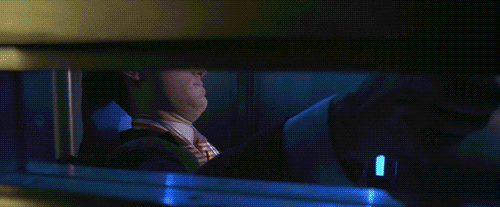


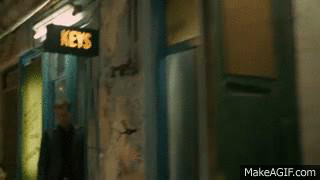

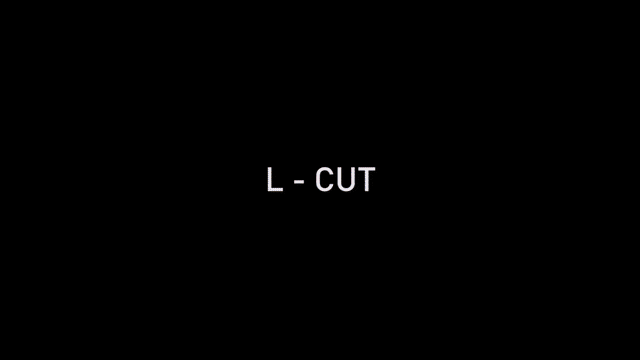
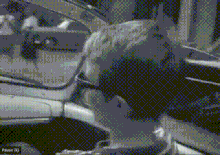
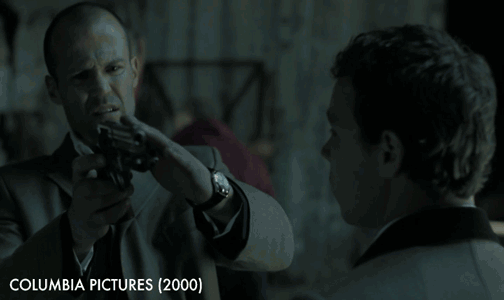
-
The Film trailer for Black Panther was carefully crafted to create excitement, suspense, and anticipation for the movie. They used a variety of editing techniques to achieve these goals, including:
-
Quick cuts - This technique involves rapidly cutting between different shots to create a sense of energy and urgency. In the Black Panther trailer, you can see this technique used during the action sequences, where shots of explosions, fights, and chases are cut together quickly.
-
Montage - A montage is a sequence of shots that are edited together to show the passage of time or convey a particular emotion. In the Black Panther trailer, you can see a montage of T'Challa's training and preparations to become king.
-
Sound design - The sound effects and music used in a trailer can greatly enhance its impact. In the Black Panther trailer, the music is used to build tension and excitement, with a mix of traditional African beats and modern hip-hop.
-
Jump cuts - Jump cuts are abrupt transitions between shots that can create a disorienting effect. They are often used to create a sense of unease or to show a character's emotional state. In the Black Panther trailer, you can see jump cuts used to show T'Challa's emotional journey as he grapples with the responsibilities of being a king.
-
Voice-over - A voice-over is a narration that is heard over the visuals. It can provide context, exposition, or commentary on what is happening on screen. In the Black Panther trailer, you can hear T'Challa's father speaking to him from beyond the grave, providing guidance and setting up the story.
-
More techniques throughout the trailer (with time stamps);
-
fade-to-black transition to initiate the Ending of the scene also allows the audience to know that time has passed.
-
The use of a fade to ease viewers into a different angle in the room rather than a sudden cut which would take away from a discovery feeling.
-
Furthermore, the use of slow motion creates an epic moment.
-
Throughout the trailer, L cuts were used to keep the same symbolic and monumental mood throughout.
-
The use of cut-in techniques used at a point to show from a closer POV the fight furthermore it suggests the use of it back and forth between different scenes giving the impression that the action is occurring in different locations but unfolding at the same time. the use of fade was used again suggesting something tragic may occur.
-
The use of an eye line match looking to his left at the place that was going to explode also helps the audience see what the character was intending to do.
-
The use of slow motion to create a dramatic effect on things when the car was shot is used to show the massacre that happened.
-
The use of cutaways to make a sequence of acting shows the audience the movie is full of action.
-
Overall, the editing techniques used in the Black Panther trailer are designed to create a sense of excitement, drama, and intrigue. They effectively tease the audience and build anticipation for the film.
The message and tone of the advertisement are also important factors. the advertisement has a positive and uplifting tone and shows an empowering message to the viewer.
The different techniques used in the advert were;
-The use of Narration suits the audience inside the mind of the subject, therefore, drawing them into the action of the story.
-Countertype is also present in the advert as it shows a woman dressed like a barbie or a queen which is stereotypically associated with women but in the next scene, the same girl is playing for an American football team which countertypes as it is a very aggressive sport which females wouldn't normally associate with.
-Countertypes of people with disabilities not being able to play sports to a high standard showing that anything is possible and their slogan 'JUST DO IT' a slogan made to encourage the younger generation to just follow their dreams as anyone can be what they want.
Finally, it's important to consider the call to action in the advert. the advertisement was designed to motivate the viewer to take action, by buying a Nike product and influencing viewers to go out into the world and do something that they wouldn't normally do which could then benefit them in the future as the viewer could find a new hobby because of the Nike advert, adopting a more positive outlook on life.
In analyzing a specific inspirational advertisement, it's important to consider how each of these elements contributes to the overall effect and message of the video. For example, if the advertisement uses a story-based approach, you might examine how the protagonist's journey is used to convey the message of the advertisement. You might also consider how the visuals, music, and tone work together to create a specific emotional response from the viewer. Ultimately, a detailed analysis of a video technique on an inspirational advertisement should aim to uncover the various elements that contribute to its success in motivating and inspiring the viewer.
-
-
Visuals: The visuals in the Nike advert use typical emotive and designed techniques to evoke a specific emotional response from the viewer. This could be achieved through the use of vivid colours, contrasting imagery, or emotionally charged scenes.
-
The Music and sound effects make for an inspirational advertisement as it often creates the desired emotional effect. The soundtrack was well-chosen to create a powerful mood and enhance the visual impact of the advertisement.
-
The narrative structure of the advertisement was also important, Many inspirational advertisements similar to this one use a story-based approach to convey their message, which could include protagonists on a journey of some kind.
-
"Bad Blood."Released in 2015, the video features a star cast of celebrities, including Selena Gomez, Cindy Crawford, and Kendrick Lamar.
The video is a high-energy, action-packed visual spectacle that tells the story of a group of female superheroes. Swift takes on the role of Catastrophe, the leader of the group, who has a falling out with her former best friend Arsyn, played by Selena Gomez.
The opening shot of the video shows Swift, dressed in all black and sporting a fierce, determined look, walking down a futuristic corridor towards a group of women standing at the end. The setting is reminiscent of a military facility, suggesting that the group of women are part of some kind of elite team.
Throughout the video, we see the members of the group performing various superhero-like feats, such as fighting off armed guards, leaping from rooftops, and hacking into computers. The action is fast-paced and visually stunning, with lots of slow-motion shots, quick cuts, and special effects.
The different types of techniques used throughout the music video;
-uses a wash to transition to the next shot in the office (0:02).
-Use of POV as Taylor is kicked through the window (0:42).
-The use of bright colours symbolises a sci-fi and futuristic feel (0:50).
-the use of CGI in the wide angle shot makes the girls stand out more and look strong and powerful as they use slow motion to make it cinematic and cool walking from the explosion (3:07).
-the use of shot reverse shot when they stare each other down (3:25).
The use of the mass explosions around them causes commotion and danger meaning something big is happening.
The video's theme of female empowerment is evident throughout. The women are all strong, powerful, and skilled, and they work together as a team to overcome their enemies. The fact that the video features such a high-profile cast of female celebrities also adds to the overall message of female empowerment and solidarity.
Kendrick Lamar makes a guest appearance in the video, adding a rap verse to the song's bridge. His appearance adds another layer of energy to the already high-octane video, and his lyrics touch on themes of loyalty and betrayal.
In conclusion, the "Bad Blood" music video is a visually stunning and empowering piece of pop culture. Its message of female empowerment is clear, and its high-profile cast of celebrities adds to its overall impact.
Non-Continuity:

I have used montage editing, showing the simple steps of making the drink as well as the freeze frame which I hoped makes the product look tantalising and nice. inspiration was used from other promotional adverts and the actual drink brand, for shots such as the one shot in which the liquid is poured into the cup slowly . which I think would've been improved if I zoomed into the rubicon pouring in the shot.
this sequence is to show how easy it was to make a drink just as good being advertised. i think i did well in using multiple shots but i could've made it more visually aesthetic with the editing techniques. i did not include flash backs as it is an advert for drinks which didn't need the use of flashbacks. instead i used montage editing as it shows of the drink making it look tantalising.
continuity experiment:


Continuity sequence:
In my video the purpose of my editing sequence was to break long videos to make them shorter videos and have a seamless flow of someone going to the shop. By editing, I made the scenes shorter which can e edited much quicker as it doesn't require editing techniques. I filmed his subject going to the corner store showing them walking from the park to the store and looking around to see what they wanted before getting their item of choice. The continuity techniques used are cutaways to establish a cut from the different angles to show continuity. If I was to do this again I would spend more time on each shot as I only spent around 10 seconds on each shot which would allow me to have more footage to play with when editing. With th use of POV i intended for the audience to relate when buying The main subject is buying a drink from the corner shop as he is thirsty. I did not manage to include the 180 degree rule and 30 degree rule as there wasn't much dialogue used and it didnt need the use of those techniques as there wasn't any use.
i wish i used more shots to convey more context in the video since it is a continuity sequence.
Horror movie:
continuity experiment:





